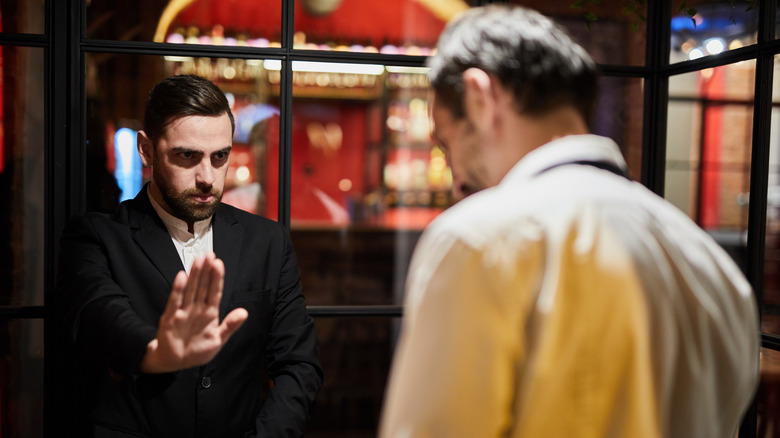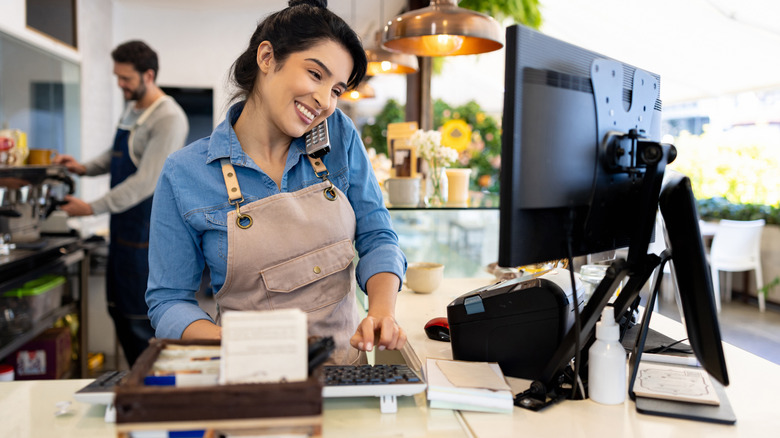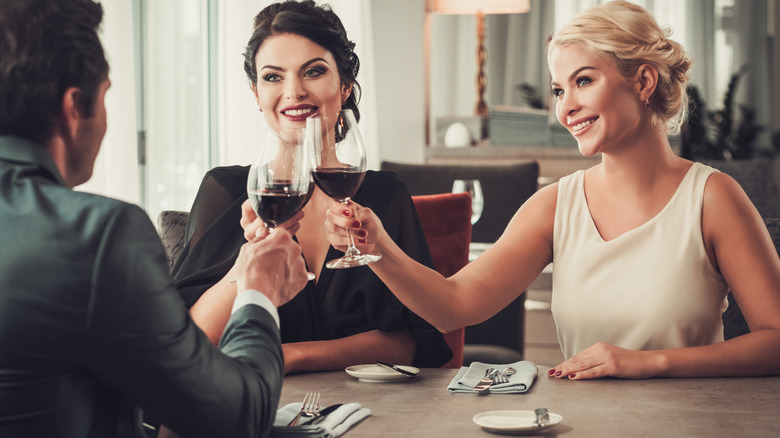What To Do If You're Turned Away At A Fine Dining Restaurant
No one wants to be turned away from a place where others are having a good time, especially if that place is a restaurant, it's dinner time, and you and your date are hungry. But this situation does occur occasionally, notably at fine dining restaurants, and generally for reasons related to reservations or dress codes.
Yes, it can be frustrating and even embarrassing, but unless you feel you were discriminated against unfairly, there is little recourse other than to become better at making reservations or understanding dress code expectations. It's always recommended, for instance, to make reservations at fine dining restaurants in advance. However, even if you've already arrived without a reservation, it's occasionally still possible to be seated. Some restaurants hold seating for walk-ins, but even if that's not the case, there may be tables that open up from reservation no-shows. In other words, just because you've been turned away doesn't mean you should give up. Nor should you take it personally if things don't turn out the way you'd hoped.
As for dress code violations, ideally, you should check the expectations in advance. But it's also true that knowing a few basic rules will help you avoid dress code issues at most restaurants. For example, blue jeans are rarely considered acceptable attire for fine dining.
Securing reservations at trendy restaurants
Calling ahead or using a reservation app like OpenTable or Resy are typically the best ways to ensure you have a table waiting for you when you arrive at your restaurant of choice. Some apps also feature notification alerts that will let you know when tables open up. If you live in a highly populated area like New York City, it may still be difficult to get reservations at the trendiest restaurants.
There's no getting around the fact that if the restaurant is a popular one, then there will be competition for the most desirable dinner times and dining room tables. In that case, it's best to make your reservation as far in advance as possible. Once you know when and with how many people you'd like to dine, go ahead and confirm a reservation, even if it's weeks — or months — in advance.
Getting last-minute reservations at popular restaurants is naturally going to be more difficult. But again, there are ways this feat can be accomplished, notably via app notifications or credit card concierge services. Showing up without a reservation is riskier, although there's at least the possibility of being put on a waiting list.
How to avoid dress code issues
One of the etiquette rules for fine dining is to dress appropriately. Of course, what constitutes appropriate attire can vary from restaurant to restaurant. However, the resurgence of the dress code in recent years was largely a response to excessive informality. Most fine-dining establishments prefer that guests avoid arriving in blue jeans, and they definitely frown upon gym wear or flip-flops.
What these establishments seek is a sophisticated ambiance that matches their fine food and service. Generally, business casual or casual elegant dress is acceptable, although the definitions for these categories can often be somewhat vague and often outdated in terms of binary gender norms. Dresses, dressy alternatives, or slacks and jacket ensembles are likely to pass muster in any fine dining restaurant. Exceptions may sometimes be made for less traditionally formal attire, provided diners have made an effort for the occasion and are wearing clothing that is clean and wrinkle-free.
Of course, it's always a good idea to call ahead to confirm the specific dress code expectations. This can be done during the same phone call when you confirm your reservation. That way, you will have addressed two important pre-visit considerations in one go, ensuring the restaurant has no reason to do anything but welcome you upon arrival.



